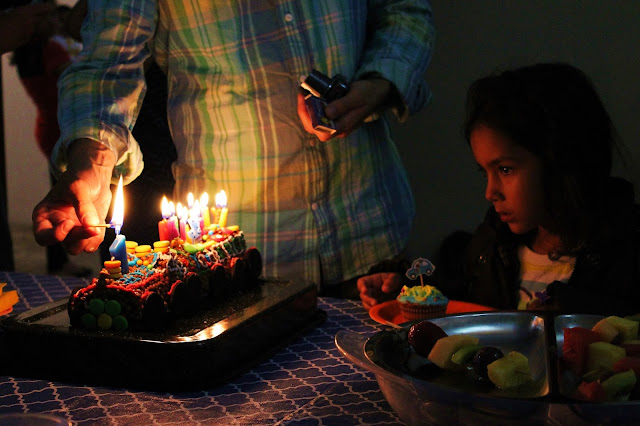We believe that Occupational Therapy is a client-based profession, one in which therapists must understand their patients' goals and meaningful activities to truly provide effective therapy. However, naturally we, as therapists, employ our own cultural framework to expedite this process. We function from assumptions about our patients that are inherent to our own culture, using presumed and simply understood cultural paradigms to approach therapeutic intervention. When crossing cultures and even sub-cultures this becomes an obstacle to effective therapy delivery. To provide effective therapy to individuals from diverse socioeconomic and cultural backgrounds, therapists must step outside of what occupational therapy scholars have called "culture blindness", being immersed in one's own culture so comprehensively that the therapist does not recognize their own cultural influences in the therapeutic relationship.
From my experiences in Guatemala and Nicaragua, I have come to realize that for culture blindness to subside and culturally competent occupational therapy to be delivered, therapists must take a step back from their traditional and assumed interventions and approaches and begin to look first at the theoretical foundations of occupational therapy. Therapists must first shave off the culturally biased flavors in which occupational therapy has developed and discover the raw underlying philosophy of the profession. From there we can allow this raw philosophical seed to grow in the natural culture of our patients, bearing the appropriate interventions and approaches rooted in the patients' own cultures and experiences.
This process requires a variety of factors to be in place. The first and foremost is rich soil into which the occupational perspective can be placed. Resources, time, and support are all necessary for the occupational perspective to be cultivated within a population in a way that connects theory to the patient in an authentic and effective manner. Unfortunately, just as Guatemalan campesinos have little land to cultivate their own crops, Guatemala and Nicaragua have little room to develop the occupational perspective. In Guatemala, the healthcare system is overburdened, disjointed, plagued with ethnic tension, overrun with NGOs, and has little room for prioritizing occupational therapy. In Nicaragua, what little occupational therapy is present is restricted by economic and political limitations, having neither the time nor the resources to effective emerge through the Nicaraguan culture.
Secondly, for the occupational perspective to take root and emerge through a new culture it must be interpreted effectively. Because of the huge presence of NGOs, service organizations, and foreign aid in Guatemala, much of the therapy is provided by non-Guatemalans who, although with good intentions, may not be providing the most effective or appropriate interventions for Guatemalan people. On many occasions, therapists provide interventions and techniques that come directly from their experiences in their respective countries instead of providing the reasoning and underlying philosophy behind those interventions to native therapists or caregivers. This creates a situation where patients, family members, or caregivers are performing interventions that may not make sense, are not effective, and maybe even create more of a burden rather than alleviating a problem.
As caregivers or therapists begin to realize that these transplanted interventions are not effective with their population, for example in Nicaragua, they resort to simplified non-occupation based techniques that do not resemble true occupational therapy. The occupational perspective, which was cultivated in Western/Developed cultures, has not been effectively interpreted for cultural differences outside that paradigm. Occupational therapy, because it is such a client based approach, must be acculturated before it can be sustainably effective. For this to occur, occupational therapists must step outside their own cultural paradigms and begin to understand the many structural and contextual factors that influence the efficacy of the therapy.
Understanding that in Nicaragua, the idea of independence may not be the most meaningful concept for a 75 year old woman because culturally she expects her children to care for her. Understanding that the routine of an indigenous woman in Guatemala may not have the flexibility to provide extra exercises to her child with special needs. Understanding that the standard approaches and solutions for assistive equipment, adaptive solutions, or even safety procedures may not be accessible, affordable, available, or of high quality. Understanding that therapists are viewed with less authority and less respect in some cultures. Understanding that sickness, disability, poverty, and independence are all viewed very differently within these cultural contexts.
For therapists crossing borders, it is integral to first understand these factors that affect their clients' in order to be creative, innovative, and revolutionary practitioners and effectively facilitate rehabilitation and/or change. Therapists crossing borders, whether that be across national borders or stepping into a homeless camp, work with tools that both hinder and facilitate potential success in their practice, having to take the time and effort to understand the full context of their patients while also bringing a new and diverse perspective on ways to resolve obstacles for their clients. It is the responsibility of therapists to find a balance between these two, uncovering a manner in which they foster occupational justice while preventing the imposition of their own culture.
 |
| Translation: "I want to be happy: To study and to play" |




















































